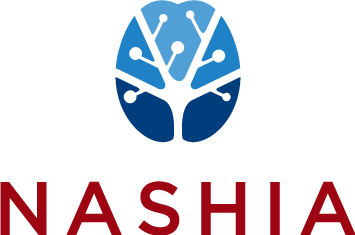Ohio Fact Sheet: Domestic Violence Hurts the Brain
This project of the Ohio Domestic Violence Network provides statewide, national and international leadership to raise awareness on the emerging area of brain injury caused by domestic violence.
Nebraska Brain Injury in Domestic Violence
“With funding from the Women Investing in Nebraska (WIN) Grant and Nebraska Dept. of Health and Human Services Office of Injury Prevention, Brain Injury Alliance of Nebraska and its partners is increasing brain injury recognition, assessment and management in programs serving victims of domestic violence.”
Read Full Article +
GAO Report on Domestic Violence: Improved Data Needed to Identify the Prevalence of Brain Injuries among Victims
“Brain injuries may be common in domestic violence victims, and such injuries may be under-diagnosed and under-treated. There is little federal data on the prevalence of this public health problem, so it’s uncertain whether federal resources are addressing it efficiently. We recommended that the Department of Health and Human Services improve data collection.”
Futures Without Violence
For more than 30 years, FUTURES has been providing groundbreaking programs, policies, and campaigns that empower individuals and organizations working to end violence against women and children around the world.
National Collaborative on Children's Brain Injury
The National Collaborative on Children’s Brain Injury (NCCBI) is a national cooperative working to improve services and supports for children with brain injury. NCCBI's current focus is on improving educational services for students with TBI.
Get Schooled on Concussions: Tip Sheets
“When we started working with educators on various Tip Sheet topic ideas, teachers were clear that anything over one page long was too much for busy teachers to read. We made a commitment to our readers that each topic would be condensed to one page of critical information.”
Characteristics of Diagnosed Concussions in Children Aged 0 to 4 Years Presenting to a Large Pediatric Healthcare Network
Objective: The aim of the study was to comprehensively describe the natural history of concussion in early childhood between 0 and 4 years.
Center for Brain Injury Research and Training: In the Classroom After Concussion
The TBI Team is funded through a grant from the Oregon Department of Education. The Team provides statewide consultative and resource services for traumatic brain injury. These services are available to assist the Regional Programs in meeting the needs of students with traumatic brain injury.
CDC Report to Congress: The Management of TBI in Children
SUBMITTED BY Centers for Disease Control and Prevention, Division of Unintentional Injury Prevention National Center for Injury Prevention and Control.
CDC HEADS UP
Keeping children and teens healthy and safe is always a top priority. Whether you are a parent, youth sports coach, school coach, school professional, or health care provider, this site will help you recognize, respond to, and minimize the risk of concussion or other serious brain injury.
SAFE Child Screening Tool Birth to 3 Years Old
Young children are at high risk for sustaining brain injuries. Data gathered using the SAFE Child Screening Tool will provide information to help professionals develop and implement appropriate services.
SAFE Child Screening Tool 3 Years Old to Kindergarten
Young children are at high risk for sustaining brain injuries. Data gathered using the SAFE Child Screening Tool will provide information to help professionals develop and implement appropriate services.
OSU TBI Screening Tool
The Ohio State University Traumatic Brain Injury (TBI) Identification Method (OSU TBI-ID) is a standardized procedure for eliciting lifetime history of TBI via a structured interview.
State Government Assistance and Supports for Individuals Living with TBI
“Individuals with TBI are often ineligible for state intellectual/developmental disability (I/DD), mental health and special health care needs programs.”
Medicaid Balancing Incentive Program: Recommendations for Core Assessment Tools for Individuals with Brain Injury
“Over the years, States have designed systems, services and supports to address the cognitive and behavioral issues associated with brain injury. Many States expanded services through Medicaid home and community-based services (HCBS) programs, such as brain injury waivers or waiver programs designed for persons with other disabilities.”
NCSL: State Approaches for Addressing TBI in the Juvenile Justice Systems
This report examines the issue and prevalence of traumatic brain injury among justice-involved juveniles.
Mt. Sinai: A Guide to Resources to Address TBI within Juvenile Justice Systems in the United States
“Opportunity lost” seems an apt characterization of many juvenile justice systems (JJSs) in the United States, in terms of learning about and addressing the needs of youth with TBI under their jurisdiction.
Colorado Criminal Justice and Brain Injury
“The Brain Injury Alliance of Colorado (BIAC) envisions our state to be one in which all survivors can thrive, including those that have been or are currently involved in the criminal justice system.”
Special Education & Traumatic Brain Injury (TBI)
A summary of State definitions and guidance for educating students with TBI-related disabilities, produced by the National Association of State Head Injury Administrators.

